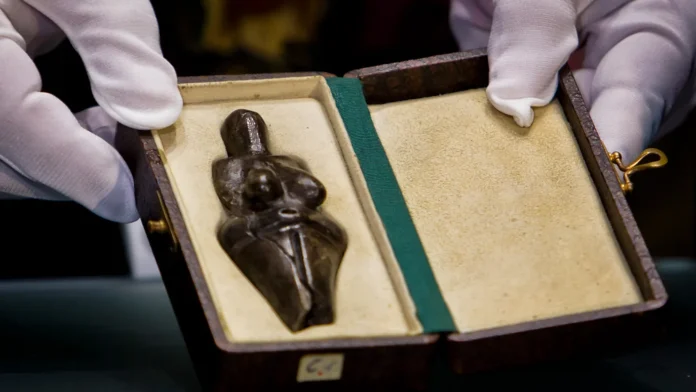The Trinity Library is an iconic library located at Trinity College in Dublin, Ireland.
History: The Trinity Library, officially known as the Library of Trinity College Dublin, dates back to its founding in 1592. It is the largest library in Ireland and one of the most renowned libraries in the world.
Long Room: The most famous section of the Trinity Library is the Long Room, a majestic hall stretching nearly 65 meters (213 feet) in length. It was built between 1712 and 1732 and features a stunning barrel-vaulted ceiling and rows of tall shelves filled with books.
The Book of Kells: The Trinity Library is home to one of its most prized possessions, the Book of Kells. This illuminated manuscript, created around the 9th century, is renowned for its intricate artwork and is considered one of Ireland’s greatest cultural treasures. It is displayed in a specially designed exhibition area within the library.
Old Library: The Long Room is part of the Old Library building, which houses a vast collection of manuscripts, rare books, and other historical documents. The library’s collection spans centuries and includes many invaluable and historically significant works.
Architecture: The Trinity Library’s architecture is a blend of different styles, reflecting its long history and various periods of expansion and renovation. Visitors can admire its beautiful Georgian architecture, characterized by elegant proportions, intricate details, and classical elements.
Visitor Attraction: The Trinity Library is a popular tourist destination, attracting visitors from around the world who come to marvel at its historic architecture, explore its extensive collection, and view treasures like the Book of Kells. Guided tours are available, providing insights into the library’s history, architecture, and collections.
Academic Hub: In addition to its role as a tourist attraction, the Trinity Library is also a vital academic and research institution. It serves as the main library for Trinity College Dublin, providing resources and support for students, faculty, and researchers across a wide range of disciplines.
Overall, the Trinity Library is not only a symbol of Ireland’s rich literary and cultural heritage but also a living testament to the enduring importance of libraries as repositories of knowledge and centers of learning

The Long Room: Within the Trinity Library, the Long Room stands as a magnificent architectural marvel. Its high, arched ceilings create a sense of grandeur, while the rows of ancient books lining the shelves impart an aura of scholarly reverence. The Long Room is not only visually stunning but also serves as a repository of knowledge, housing over 200,000 of the library’s oldest books.
Brian Boru Harp: Another notable treasure housed within the Trinity Library is the Brian Boru Harp, also known as the Trinity College Harp or the Clàrsach of Brian Boru. Dating back to the 14th or 15th century, this iconic harp is one of Ireland’s oldest surviving musical instruments and is widely regarded as a symbol of Irish culture. It holds historical significance as a national emblem and features prominently in Irish iconography, including Ireland’s coat of arms.
The Book of Durrow: Alongside the Book of Kells, the Trinity Library is home to another significant illuminated manuscript known as the Book of Durrow. Created in the 7th or 8th century, the Book of Durrow is one of the earliest surviving examples of Irish manuscript illumination. Its intricate designs and vibrant colors provide valuable insights into the artistic and religious practices of early medieval Ireland.
Library Exhibitions: In addition to its permanent collections, the Trinity Library regularly hosts exhibitions and displays that showcase its treasures to the public. These exhibitions often highlight specific themes, historical periods, or artistic styles, offering visitors a deeper understanding of the library’s diverse holdings and cultural significance.
Digital Collections: Recognizing the importance of making its collections accessible to a global audience, the Trinity Library has undertaken initiatives to digitize its holdings. Through online platforms and digital archives, users can explore a wealth of digitized manuscripts, rare books, and historical documents from the comfort of their own homes, ensuring that the library’s cultural heritage reaches audiences far and wide.
Overall, the Trinity Library stands as a beacon of scholarship, preservation, and cultural heritage, preserving centuries of history and inspiring generations of scholars, artists, and visitors from around the world.
Library Architecture: The architecture of the Trinity Library is not only functional but also reflects the ideals and aspirations of the institution. From the neoclassical facade of the Old Library to the ornate details of the Long Room, every aspect of the building’s design conveys a sense of scholarly tradition and intellectual pursuit. The library’s architectural features, such as its towering windows, intricate woodwork, and marble busts of notable figures, create an atmosphere of academic reverence and historical continuity.
Special Collections: In addition to the Book of Kells and the Book of Durrow, the Trinity Library boasts an extensive collection of special materials, including rare manuscripts, early printed books, maps, and archives. These special collections encompass a wide range of subjects and disciplines, offering valuable resources for researchers, scholars, and enthusiasts alike. From medieval manuscripts to modern literary archives, the Trinity Library’s special collections provide a rich tapestry of human knowledge and creativity.
Research and Scholarship: As a leading research institution, the Trinity Library plays a vital role in supporting academic inquiry and intellectual discovery. Its vast resources, knowledgeable staff, and state-of-the-art facilities serve as catalysts for groundbreaking research and scholarship across diverse fields and disciplines. From cutting-edge scientific studies to innovative humanities projects, the library serves as a hub of intellectual exchange and collaboration, fostering a vibrant community of scholars and researchers.
Cultural Events and Outreach: Beyond its role as a repository of books and manuscripts, the Trinity Library is also a cultural hub that hosts a wide range of events, lectures, and exhibitions throughout the year. These cultural programs engage with diverse audiences and promote a deeper appreciation of literature, history, and the arts. Whether through public lectures, literary festivals, or community outreach initiatives, the Trinity Library actively seeks to enrich the cultural life of Dublin and beyond.
Preservation and Conservation: The Trinity Library is committed to preserving and safeguarding its collections for future generations. Through dedicated conservation efforts and advanced preservation techniques, the library ensures that its rare and fragile materials are protected from deterioration and decay. From temperature-controlled storage facilities to specialized conservation laboratories, the Trinity Library employs a range of strategies to ensure the long-term survival of its invaluable cultural heritage.
In summary, the Trinity Library stands as a bastion of knowledge, creativity, and cultural heritage, embodying the enduring values of scholarship, preservation, and intellectual inquiry. Through its historic collections, academic resources, and cultural programming, the library continues to inspire and enrich the lives of scholars, students, and visitors from around the world.






